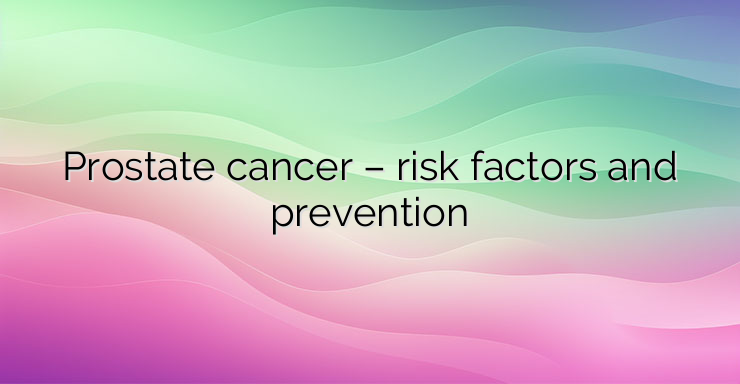Prostate cancer is the most common malignancy among the male population. On an annual basis, only lung cancer accounts for more cancer deaths in the US than prostate cancer. Age The development of the disease shows age dependence. Statistics demonstrate that more than 50% of men over the age of 80 have clinically evident disease or the histological picture of biopsy material from the gland shows characteristics of malignant transformation of cells without it yet being clinically apparent. In view of the increasing life expectancy, prostate cancer is emerging as a serious medical problem with a high social burden in the population’s morbidity structure. Race Prostate cancer is more common and more aggressive among African Americans. The frequency is lowest among Asians. Genetics The reason for the development of the disease is the accumulation of genetic mutations in the DNA molecule. Collectively, these changes lead to malignant degeneration of cells. Some of the mutations can be inherited, which does not mean that prostate cancer is an inherited disease. An increased susceptibility but not a predisposition to cancer is inherited. It has been shown that for men with a first-line relative diagnosed with prostate cancer, the risk of developing the disease is more than doubled. With two or more relatives, the risk jumps between 5 and 11 times. Harmful habits and diet Other risk factors are smoking and the systematic consumption of foods with a high content of animal fat. Prostate cancer is 20-30% less common among vegetarians. Increased intake of animal fat increases the production of testosterone, which is crucial for the development of hormone-sensitive prostate cancer. Overweight (BMI-25-29.9 kg/m2) and obesity (BMI>30 kg/m2) are associated with an increased risk of death for patients already diagnosed with prostate cancer. The data that the intake of Vitamin E and selenium has a prophylactic role and reduces the risk of developing prostate cancer has been proven false. Alcohol, blood type, sexual activity also do not affect the risk. Anabolic steroids and substances that increase testosterone With anabolic steroids, testosterone and its active derivatives enter the body. Part of the testosterone circulating in the blood is converted into dehydrotestosterone in the prostate, which has an even more powerful anabolic effect. The systemic burden of the gland with male sex hormones causes its growth (hyperplasia) and increases the risk of prostate cancer. The increasing use of Tribulus terrestris in gyms also has the end effect of raising testosterone levels in the blood, albeit through a different, more physiological mechanism. However, this does not make the extract of the herb any less dangerous in terms of the risk of developing prostate cancer. Chemoprevention Globally, there is no approved medicinal prophylaxis (chemoprevention) of oncological disease.In the US, there have been studies of the role of 5-alpha reductase inhibitors (the enzyme that converts testosterone to dehydrotestosterone in the prostate) taken by healthy men over 55 for years. NEWS_MORE_BOX After the results of the studies were reported, an effect was reported in terms of reducing the incidence of prostate cancer. The US Food and Drug Administration, however, accepts the results as having inconclusive clinical value for the mass introduction of this group of drugs as chemoprevention in routine clinical practice. Prophylaxis and early diagnosis of prostate cancer are carried out through regular preventive examinations at a urologist, including rectal douching and laboratory testing of a tumor marker – PSA (prostate-specific antigen). The frequency of examinations should be tailored to age, family history, race, onset of symptoms, and change in serum PSA levels. To reduce the individual risk of developing the disease, the reduction of animal fats in the diet, the limitation of smoking, the maintenance of weight within normal limits and the non-interference in the hormonal status with regard to male sex hormones through the intake of anabolic steroids and other substances are important.


Leave a Reply